
_____________________________________________________________________

_____________________________________________________________________
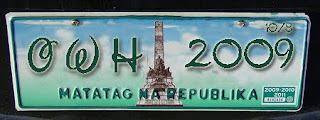





 g agent. Water circulates through the blood and helps transport nutrients and oxygen towards organs and cells. It acts as a solvent for many nutrients and essential salts and makes them available for absorption by the body.
g agent. Water circulates through the blood and helps transport nutrients and oxygen towards organs and cells. It acts as a solvent for many nutrients and essential salts and makes them available for absorption by the body. m the body - this is accomplished in the form of urine and sweat. Think of it as a detoxifying agent. This is one of the most important functions of water in our body (although not very highly appreciated often in daily life).
m the body - this is accomplished in the form of urine and sweat. Think of it as a detoxifying agent. This is one of the most important functions of water in our body (although not very highly appreciated often in daily life). 4. Water helps reduce the risk of kidney stones. The kidneys filter out waste products from the blood and channel them out of the body through the process of urine formation. Increasing concentration of certain salts in the urine increases the risk of kidney stone formation - and in most cases this risk can be reduced by drinking a lot of water and diluting the urine. It is usually recommended that adults prone to kidney stones should try to drink about 12 eight-ounce glasses of water everyday (normal adult recommendation is about 8 glasses).
4. Water helps reduce the risk of kidney stones. The kidneys filter out waste products from the blood and channel them out of the body through the process of urine formation. Increasing concentration of certain salts in the urine increases the risk of kidney stone formation - and in most cases this risk can be reduced by drinking a lot of water and diluting the urine. It is usually recommended that adults prone to kidney stones should try to drink about 12 eight-ounce glasses of water everyday (normal adult recommendation is about 8 glasses). y days, we sweat (in other words - excrete water) more and the evaporation of the sweat has a cooling effect on the body. In the absence of sufficient water (when dehydration occurs) in your body, this temperature regulation breaks down and body temperature increases - and this leads to sunstroke. Severe sunstroke has the potential to damage your vital organs.
y days, we sweat (in other words - excrete water) more and the evaporation of the sweat has a cooling effect on the body. In the absence of sufficient water (when dehydration occurs) in your body, this temperature regulation breaks down and body temperature increases - and this leads to sunstroke. Severe sunstroke has the potential to damage your vital organs. ower the blood pressure. When you lose more than optimal levels of fluid due to various conditions (not drinking sufficient water, heavy exercise, illness, etc), the body tries to adjust for the loss of water by constricting blood vessels so that the rate of loss of water (due to sweating and respiration) is reduced - which in turn leads to higher blood pressure. Drink ample water to prevent this from happening. Of course, this is applicable when the higher blood pressure has been attributed to the lack of enough fluids in the body [don’t confuse this with special diuretic treatments for certain heart, liver, and kidney conditions - in which sometimes it is necessary to remove excess fluids from the body to lower the blood pressure].
ower the blood pressure. When you lose more than optimal levels of fluid due to various conditions (not drinking sufficient water, heavy exercise, illness, etc), the body tries to adjust for the loss of water by constricting blood vessels so that the rate of loss of water (due to sweating and respiration) is reduced - which in turn leads to higher blood pressure. Drink ample water to prevent this from happening. Of course, this is applicable when the higher blood pressure has been attributed to the lack of enough fluids in the body [don’t confuse this with special diuretic treatments for certain heart, liver, and kidney conditions - in which sometimes it is necessary to remove excess fluids from the body to lower the blood pressure].
 s of sweating, it also removes impurities in the skin and cleanses it - leaving you with a healthy and younger looking skin. Dehydrated skin cells can cause your skin to appear wrinkled or sagging.
s of sweating, it also removes impurities in the skin and cleanses it - leaving you with a healthy and younger looking skin. Dehydrated skin cells can cause your skin to appear wrinkled or sagging. does not contain calories. Feel free to replace those sugary soft drinks with water; water does not contain any calories - so unlike the soft drinks it’s not going to increase your weight. Some studies have pointed towards how increased water consumption can in fact cause weight loss. Americans consume about 13 billion gallons of calorific drinks every year. You can imagine the net effect that can be achieved by replacing all that with water. Make it a habit - whenever you go to a fast food joint or a restaurant, ask for water instead of a soda.
does not contain calories. Feel free to replace those sugary soft drinks with water; water does not contain any calories - so unlike the soft drinks it’s not going to increase your weight. Some studies have pointed towards how increased water consumption can in fact cause weight loss. Americans consume about 13 billion gallons of calorific drinks every year. You can imagine the net effect that can be achieved by replacing all that with water. Make it a habit - whenever you go to a fast food joint or a restaurant, ask for water instead of a soda. ople who are already over-weight and are controlling their appetite in order to lose weight. If you are anorexic, this isn’t for you.
ople who are already over-weight and are controlling their appetite in order to lose weight. If you are anorexic, this isn’t for you.

 stories that tell the origin of the name of Oas:
stories that tell the origin of the name of Oas:

 Kami po ay bukas mula alas otso ng umaga hanggang alas siete ng gabi tuwing Lunes hanggang Sabado. Ang aming Delivery Service ay hanggang alas 6 ng gabi po lamang. Dahil sa weekly maintenance,cleaning,change filter etc. and most of all to have time with our Creator, kami po ay half-day every sundays. Until 12:00nn only.
Kami po ay bukas mula alas otso ng umaga hanggang alas siete ng gabi tuwing Lunes hanggang Sabado. Ang aming Delivery Service ay hanggang alas 6 ng gabi po lamang. Dahil sa weekly maintenance,cleaning,change filter etc. and most of all to have time with our Creator, kami po ay half-day every sundays. Until 12:00nn only.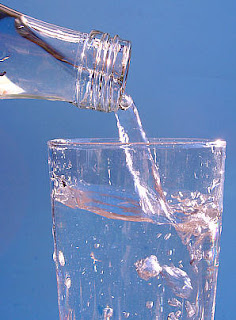 Mineral water is a very popular drink in the modern world and contains minerals like calcium and magnesium, along with other dissolved substances that are very beneficial for human health and hygiene. Among the various substances found dissolved in mineral water, the vital ones are salt, sulfur compounds and various gases. The use of mineral water to cure ailments and diseases has been known since a long time. It was traditionally consumed at its very source called spas, wells or baths. However, there is a mild difference in the usage of these words. Spas would be used when the water was used for the purpose of both consumption and bath, wells would be used when the water was not generally used to bathe with and bath when the water was not generally consumed. Today, bottling of mineral water has become a blooming business, as people are coming to know more about the diverse health benefits of mineral water. To know all about the therapeutic effects of mineral water, check the information listed below.
Mineral water is a very popular drink in the modern world and contains minerals like calcium and magnesium, along with other dissolved substances that are very beneficial for human health and hygiene. Among the various substances found dissolved in mineral water, the vital ones are salt, sulfur compounds and various gases. The use of mineral water to cure ailments and diseases has been known since a long time. It was traditionally consumed at its very source called spas, wells or baths. However, there is a mild difference in the usage of these words. Spas would be used when the water was used for the purpose of both consumption and bath, wells would be used when the water was not generally used to bathe with and bath when the water was not generally consumed. Today, bottling of mineral water has become a blooming business, as people are coming to know more about the diverse health benefits of mineral water. To know all about the therapeutic effects of mineral water, check the information listed below.

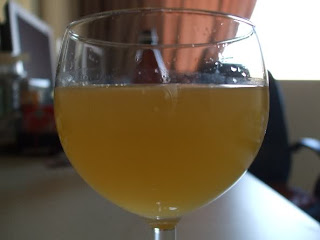
 can also be found in soil and on vegetation. Coliform bacteria are relatively simple to identify and are present in much larger numbers than more dangerous pathogens. Coliform bacteria react to the natural environment and treatment processes in a manner and degree similar to pathogens. By monitoring coliform bacteria, the increase or decrease of many pathogenic bacteria can be estimated.
can also be found in soil and on vegetation. Coliform bacteria are relatively simple to identify and are present in much larger numbers than more dangerous pathogens. Coliform bacteria react to the natural environment and treatment processes in a manner and degree similar to pathogens. By monitoring coliform bacteria, the increase or decrease of many pathogenic bacteria can be estimated.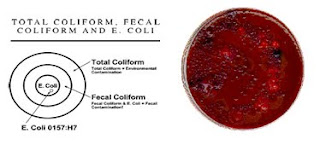
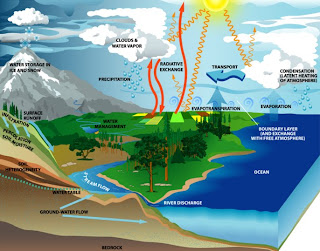 Water is the most abundant liquid on Earth. It covers more than 70% of the earth's surface. Including the clouds (which are, of course, also water), it makes our entire planet look blue and white from space.
Water is the most abundant liquid on Earth. It covers more than 70% of the earth's surface. Including the clouds (which are, of course, also water), it makes our entire planet look blue and white from space.